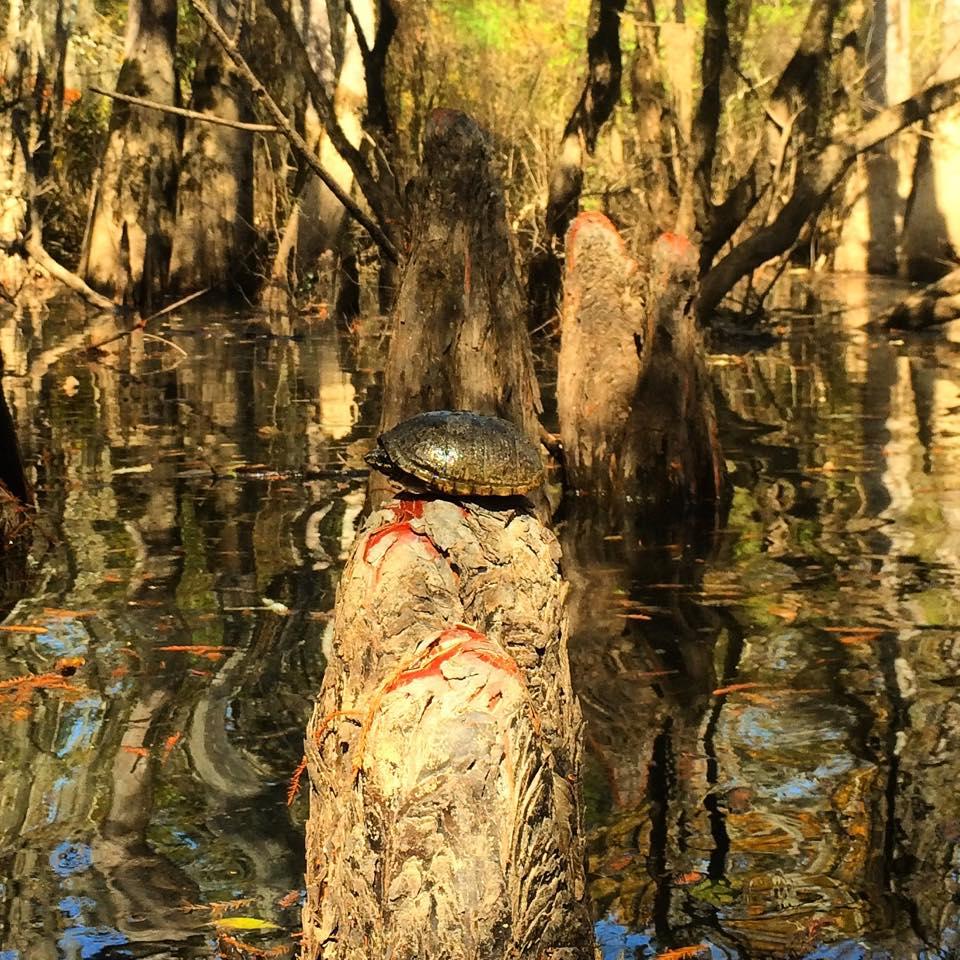TURTLES IN THE LOUISIANA SWAMP

Nestled within the enchanting landscapes of New Orleans are swamps that play host to a fascinating array of wildlife. Among the diverse inhabitants of these swamplands, turtles stand out as essential contributors to the delicate ecological balance. In this article, we’ll explore the various turtles that call the swamps around New Orleans home and delve into their significance in this unique ecosystem.
Common Turtles in New Orleans Swamps
Snapping Turtles
One of the iconic residents of New Orleans swamps is the snapping turtle. Known for their formidable beaks and robust shells, snapping turtles are often spotted basking in the sun along the swamp’s edge.
Painted Turtles
Adorning the swamps with their vibrant colors, painted turtles are a sight to behold. These turtles, with their distinctive red markings, are commonly found in the calm waters of New Orleans swamps.
Eastern Mud Turtles
In the muddy recesses of the swamp, the Eastern mud turtle thrives. Recognizable by their dark, dome-shaped shells, these turtles are adept at navigating the wetland’s labyrinthine waterways.
Habitat and Behavior
Preferred swamp environments for turtles vary, with some species favoring the slow-moving waters while others seek refuge in the dense vegetation. Many swamp turtles exhibit nocturnal habits, venturing out under the moonlit sky to forage for food or find suitable mates.
Adaptations to Swamp Life
Turtles in New Orleans swamps have evolved specific adaptations to thrive in their unique environment. Their shells, a masterpiece of natural engineering, provide both protection and buoyancy. Webbed feet enable efficient swimming, allowing turtles to navigate the waterways with ease.
Role in Ecosystem
Beyond their aesthetic appeal, turtles play a crucial role in the swamp ecosystem. They contribute to the food chain, regulating insect populations and serving as prey for larger predators. The intricate web of interactions among swamp inhabitants relies on the presence of these shelled creatures.
Threats to Swamp Turtles
Despite their resilience, swamp turtles face threats from human activities. Pollution, habitat destruction, and the illegal pet trade pose significant challenges to their survival. Recognizing and addressing these threats is paramount to ensuring the continued existence of these fascinating creatures.
Conservation Efforts
Efforts to safeguard swamp turtle populations are underway. Conservation initiatives focus on habitat preservation, combating pollution, and raising awareness about the importance of these creatures in maintaining the ecological balance of the swamps.
Turtle Watching in New Orleans
For enthusiasts eager to catch a glimpse of these fascinating creatures, several swamp areas around New Orleans offer excellent opportunities for turtle watching. However, it’s crucial to approach wildlife observation responsibly, respecting the natural habitats of these turtles.
Interesting Facts About Swamp Turtles
Did you know that some swamp turtles can live for over a century? Their longevity is just one of the many intriguing aspects of these ancient creatures. From unique behaviors to remarkable features, swamp turtles never cease to amaze.
Why Swamps Are Vital for Turtles
Swamps serve as vital breeding grounds for turtles, providing a safe haven for nesting and hatching. The interconnectedness of turtles and wetlands emphasizes the importance of preserving these environments for the well-being of these shelled inhabitants.
Impact of Climate Change
Climate change poses challenges to turtle habitats, with rising temperatures and altered precipitation patterns affecting their survival. Conservation strategies must adapt to the changing climate to ensure the continued existence of swamp turtles.
Balancing Tourism and Conservation
As swamp tourism gains popularity, finding a balance between human activity and turtle conservation becomes crucial. Sustainable tourism practices and responsible visitor behavior are essential to preserving the integrity of the swamps.
Local Efforts and Initiatives
Communities around New Orleans actively participate in turtle conservation. From grassroots initiatives to collaborative projects, these efforts showcase the power of local involvement in safeguarding the swamp’s precious inhabitants.
Educational Programs
Educational institutions play a pivotal role in raising awareness about swamp turtles. By imparting knowledge about these creatures and their ecological significance, institutions contribute to building a community that values and protects its natural heritage.
Conclusion
In the heart of New Orleans swamps, turtles weave their stories into the rich tapestry of this unique ecosystem. Preserving these creatures is not just an ecological imperative but a commitment to maintaining the enchanting allure of the swamps for generations to come. As we marvel at the beauty of these shelled inhabitants, let us also pledge to be stewards of their delicate habitats.
FAQs
- Are all turtles in New Orleans swamps aquatic?
- While some turtles, like the painted turtle, are aquatic, others, such as snapping turtles, spend a significant amount of time on land.
- How can I contribute to turtle conservation in New Orleans?
- Participate in local conservation programs, support initiatives against pollution, and practice responsible wildlife observation.
- Do swamp turtles hibernate during the winter months?
- Yes, many swamp turtles hibernate during the winter, seeking refuge in the mud at the bottom of the swamp.
- Are there any endangered turtle species in New Orleans swamps?
- Yes, some turtle species in the area are classified as endangered, highlighting the need for conservation efforts.
- Can I keep a swamp turtle as a pet?
- It is not recommended to keep swamp turtles as pets, as they have specific habitat requirements that are challenging to replicate in captivity.
